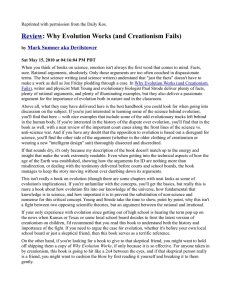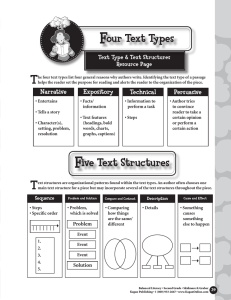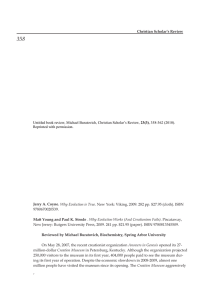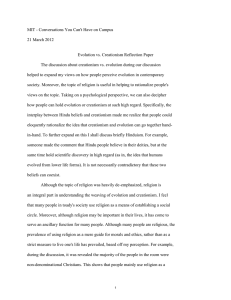Book Reviews Why Evolution Works (and Creationism Fails) 73
advertisement
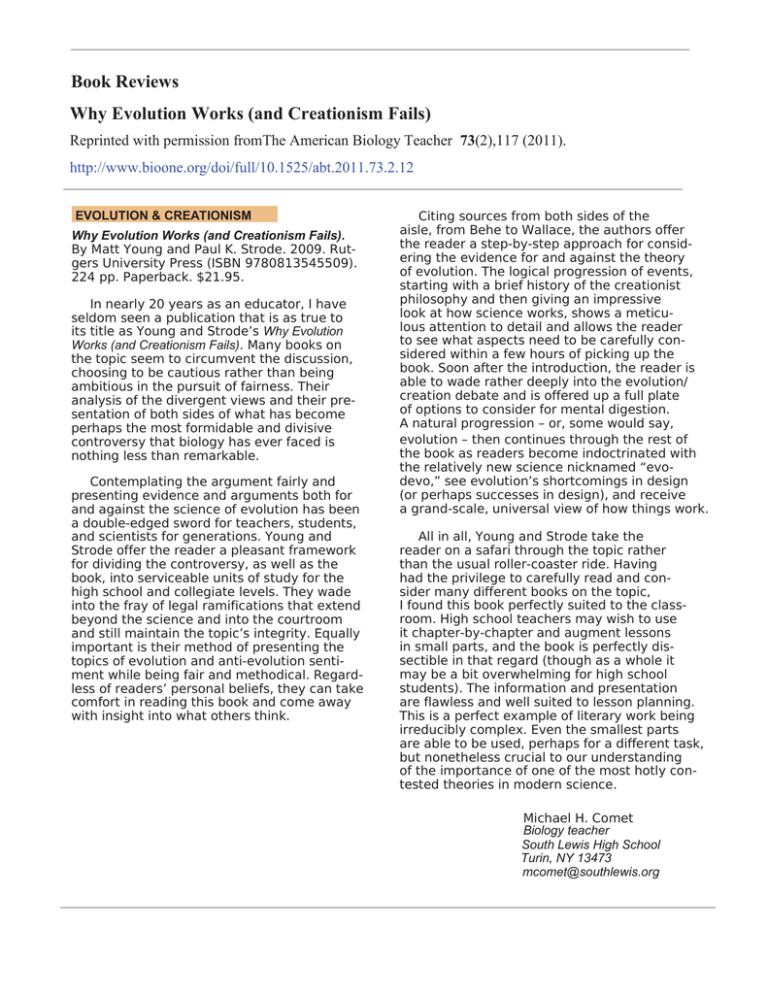
Book Reviews Why Evolution Works (and Creationism Fails) Reprinted with permission fromThe American Biology Teacher 73(2),117 (2011). http://www.bioone.org/doi/full/10.1525/abt.2011.73.2.12 EVOLUTION & CREATIONISM Why Evolution Works (and Creationism Fails). By Matt Young and Paul K. Strode. 2009. Rutgers University Press (ISBN 9780813545509). 224 pp. Paperback. $21.95. In nearly 20 years as an educator, I have seldom seen a publication that is as true to its title as Young and Strode’s Why Evolution Works (and Creationism Fails). Many books on the topic seem to circumvent the discussion, choosing to be cautious rather than being ambitious in the pursuit of fairness. Their analysis of the divergent views and their presentation of both sides of what has become perhaps the most formidable and divisive controversy that biology has ever faced is nothing less than remarkable. Contemplating the argument fairly and presenting evidence and arguments both for and against the science of evolution has been a double-edged sword for teachers, students, and scientists for generations. Young and Strode offer the reader a pleasant framework for dividing the controversy, as well as the book, into serviceable units of study for the high school and collegiate levels. They wade into the fray of legal ramifications that extend beyond the science and into the courtroom and still maintain the topic’s integrity. Equally important is their method of presenting the topics of evolution and anti-evolution sentiment while being fair and methodical. Regardless of readers’ personal beliefs, they can take comfort in reading this book and come away with insight into what others think. Citing sources from both sides of the aisle, from Behe to Wallace, the authors offer the reader a step-by-step approach for considering the evidence for and against the theory of evolution. The logical progression of events, starting with a brief history of the creationist philosophy and then giving an impressive look at how science works, shows a meticulous attention to detail and allows the reader to see what aspects need to be carefully considered within a few hours of picking up the book. Soon after the introduction, the reader is able to wade rather deeply into the evolution/ creation debate and is offered up a full plate of options to consider for mental digestion. A natural progression – or, some would say, evolution – then continues through the rest of the book as readers become indoctrinated with the relatively new science nicknamed “evodevo,” see evolution’s shortcomings in design (or perhaps successes in design), and receive a grand-scale, universal view of how things work. All in all, Young and Strode take the reader on a safari through the topic rather than the usual roller-coaster ride. Having had the privilege to carefully read and consider many different books on the topic, I found this book perfectly suited to the classroom. High school teachers may wish to use it chapter-by-chapter and augment lessons in small parts, and the book is perfectly dissectible in that regard (though as a whole it may be a bit overwhelming for high school students). The information and presentation are flawless and well suited to lesson planning. This is a perfect example of literary work being irreducibly complex. Even the smallest parts are able to be used, perhaps for a different task, but nonetheless crucial to our understanding of the importance of one of the most hotly contested theories in modern science. Michael H. Comet Biology teacher South Lewis High School Turin, NY 13473 mcomet@southlewis.org

